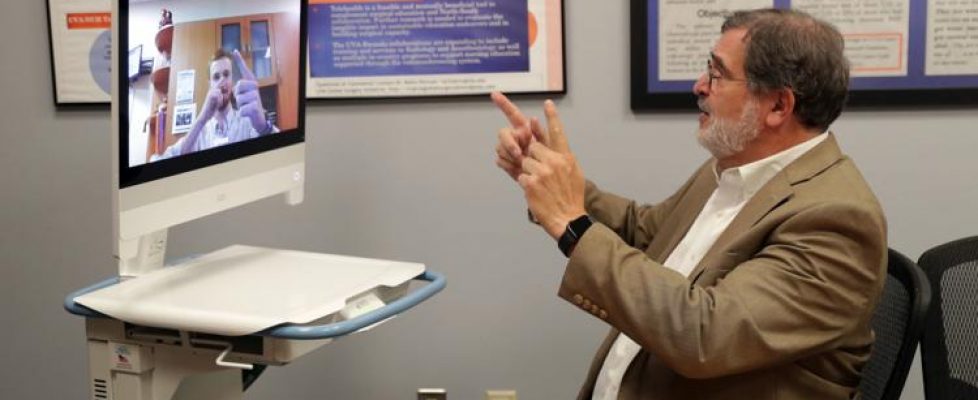Brian Donohue column: The potential of telehealth for cancer patients in Virginia
A cancer diagnosis changes everything. First, you receive this earth-shattering news and then, you enter the maze of cancer care, with countless visits to specialists and other health care providers to discuss which treatment options are appropriate for you. Fortunately, there are options, thanks to scientific research and clinical trials. But no matter where you live, you may encounter logistical challenges reaching everyone on your treatment team. Clinicians, survivorship specialists and researchers running clinic trials may be miles away or may necessitate a lengthy trip.
Cancer requires constant care from and communication with your many health care providers. You spend a significant amount of time getting to appointments and making sure your doctors have all of your information. Thankfully technology is becoming an ally of cancer patients.
Traditionally, patients have had to see health care professionals in person, yet not all care requires a face-to-face office visit. Now, thanks to telehealth, doctors, nurse practitioners, therapists and other providers can deliver care from a distance through technology such as videoconferencing and remote monitoring. For instance, remote monitoring of vital signs like blood pressure, blood oxygen levels and heart rate can enable providers to see symptoms of a problem before a crisis occurs. This is especially helpful after a hospital discharge, when providers who track patients health care data can recognize and address issues to prevent patients being re-admitted to the hospital. Remote monitoring can also reassure patients that their symptoms are normal, and they do not need to go to the emergency room.
The advantages for cancer patients can be meaningful. Telehealth saves patients travel time, money that would otherwise be spent on transportation costs to the health care provider’s office and time away from work. When you have cancer, these savings make a difference.
Technology also connects patients, as well as their physicians, to experts far away who can assess their cancer and make recommendations. The science in oncology has advanced tremendously over recent years and, as a result of our greater understanding of cancer, the field has developed very specialized cancer expertise. Patients, especially those whose cancer is rare or whose cancer’s genetic makeup is atypical, can benefit from the insights of the few doctors who have specialized in their type of cancer, but traveling across the country for an in-person appointment is often expensive and difficult. Telehealth can bring patients and far-flung experts together efficiently and economically and help to improve patient care.
Telehealth can be vital to cancer patients in rural communities across Virginia where there are fewer oncologists, radiologists and other relevant specialists than in urban areas. This is especially true in communities where hospitals have closed. When there is a shortage of health care professionals, telehealth can give cancer patients anywhere greater access to their services.
The full potential of telehealth, however, cannot be realized until rural communities have access to reliable broadband services that telehealth requires. Unfortunately, broadband services are inadequate or nonexistent in many parts of the state. According to the Virginia Broadband Availability Map, created by the Center for Geospatial Information Technology at Virginia Tech, as of December 2017, huge swaths of the state are in an underserved or unserved area, or have no residential broadband. As access to broadband services continues to improve, access to telehealth can follow.
There are limitations to telehealth. For instance, procedures and physical examinations require in-person care. And not everyone has good internet service or equipment like a tablet, smartphone or computer with a camera. Many patients simply prefer to talk to their providers in person, and providers may be better able to recognize patients’ concerns in person than through a videoconference or telephone call. But telehealth is an important tool for improving access to medical services, though it must always be voluntary.
States have a role to play in telehealth, including encouraging the expansion of broadband capabilities and enforcing requirements that telehealth must always be secure. Virginia has taken steps to take advantage of telehealth. For example, the Virginia Telehealth Network, within the state’s Department of Health’s Division of Primary Care and Rural Health, was established in 2002 to promote the use of telehealth in the state, and the State Office of Rural Health has actively sought and received funding to advance telehealth.
Telemedicine can remove some of the burden on cancer patients, improve their quality of life, expand their access to experts far from them and to specialists with limited availability, and benefit our health care system as a whole by preventing unnecessary expenditures. Virginia should continue down the road of bringing the full potential of telehealth to all who want it across the state.

